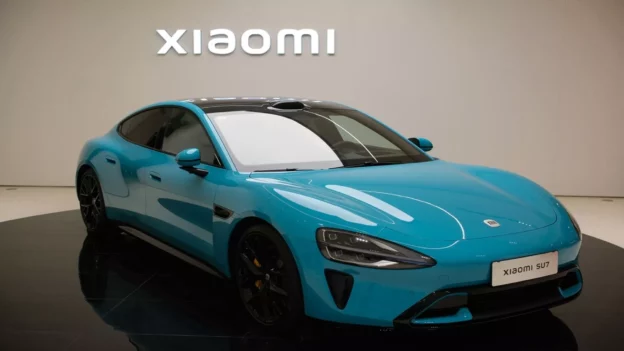Xiaomi has ventured into the electric vehicle market with the launch of the SU7 model. This vehicle is touted as a high-performance, eco-friendly sedan intended to compete directly with established brands such as Tesla.
The SU7 has two variants
After an initial investment of more than $1.3 billion in electric vehicle development, Xiaomi has introduced two variants of this model: the SU7 and SU7 Max, both designed with proprietary technology that includes powerful motors and batteries.
The SU7 Max stands out by offering 495 kW of power and impressive autonomy up to 800 KmThe new version of this advanced version is equipped with all-wheel drive, and it is also available in a new version of the Porsche Taycan. can accelerate from 0 to 100 km/h in only 2.78 seconds.
For its part, Xiaomi has integrated advanced autonomous driving systems into the SU7, supported by LiDAR technology, high-definition cameras and proximity sensors, with software operating on its own HyperOS operating system, designed to integrate with Xiaomi’s technology ecosystem.
How much does the Xiaomi SU7 cost?
In terms of marketing, Xiaomi’s SU7 has already gone on sale in China, where it has generated great anticipation and significant sales, with 90,000 units sold in the first 24 hours. The vehicle’s competitive pricing, which starts at $30,000 for the base version and reaches $41,000 for the high-end model, positions it favorably against models such as the Tesla Model 3.
This successful launch has resulted in a 16% increase in Xiaomi’s stock value, surpassing even automotive giants such as General Motors and Ford in market value.
Xiaomi’s new entry into the electric vehicle segment not only marks a milestone for the company, but also catalyzes a change in the global market’s perception of diversified technology manufacturers entering the automotive industry. This move could stimulate more technology companies to explore the development of electric vehicles potentially accelerating the adoption of this technology worldwide and promoting a faster shift towards sustainability in the transportation industry.
Follow us on social networks and don’t miss any of our publications!
Inspenet.com YouTube LinkedIn Facebook Instagram X
Source: revistaespejo.com
Photo: shutterstock

